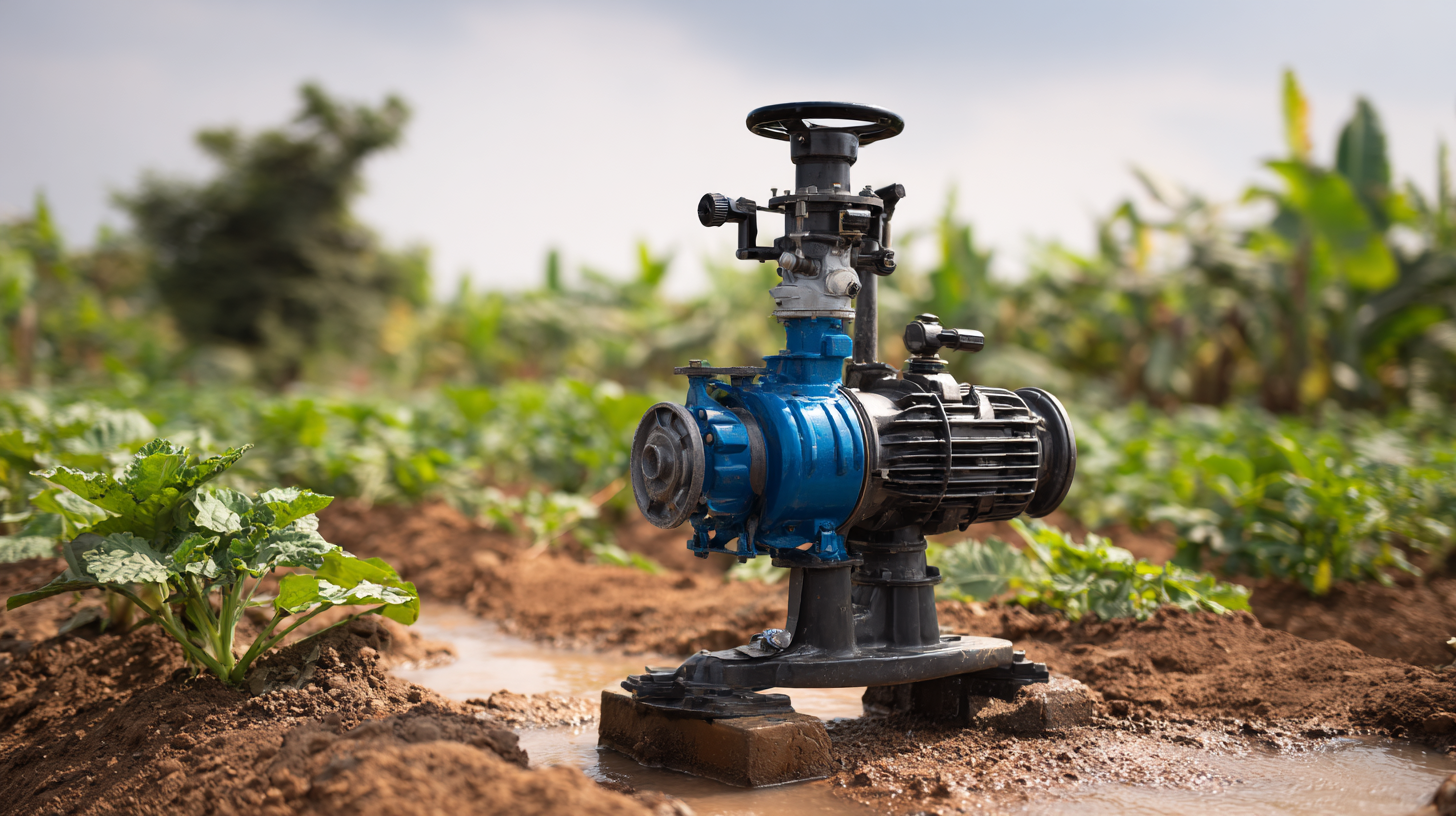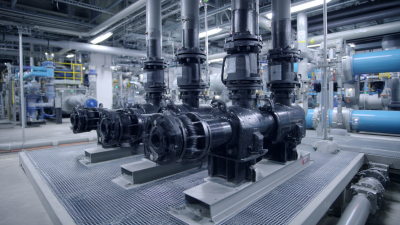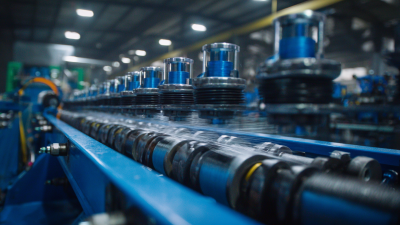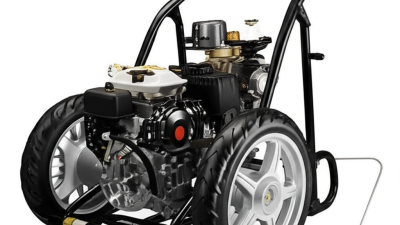Understanding the Power of Diaphragm Water Pumps in Modern Irrigation Systems
 In the realm of modern irrigation systems, the diaphragm water pump emerges as a crucial component, revolutionizing the way water is managed and distributed in agriculture. According to a report by the American Society of Agricultural and Biological Engineers, effective irrigation is paramount to increasing crop yield and efficiency, with studies indicating that up to 60% of agricultural production can be attributed to optimized water management techniques. Diaphragm water pumps, known for their efficiency and reliability, offer a versatile solution that can handle varying water volumes and adapt to different irrigation needs. Their ability to maintain constant flow rates while minimizing the risk of contamination positions them as an ideal choice for both small-scale farms and large agricultural operations. As the demand for sustainable agricultural practices continues to grow, understanding the power of diaphragm water pumps becomes essential for farmers seeking to enhance their irrigation practices and ensure resilient crop production in an ever-changing climate.
In the realm of modern irrigation systems, the diaphragm water pump emerges as a crucial component, revolutionizing the way water is managed and distributed in agriculture. According to a report by the American Society of Agricultural and Biological Engineers, effective irrigation is paramount to increasing crop yield and efficiency, with studies indicating that up to 60% of agricultural production can be attributed to optimized water management techniques. Diaphragm water pumps, known for their efficiency and reliability, offer a versatile solution that can handle varying water volumes and adapt to different irrigation needs. Their ability to maintain constant flow rates while minimizing the risk of contamination positions them as an ideal choice for both small-scale farms and large agricultural operations. As the demand for sustainable agricultural practices continues to grow, understanding the power of diaphragm water pumps becomes essential for farmers seeking to enhance their irrigation practices and ensure resilient crop production in an ever-changing climate.
The Efficiency of Diaphragm Pumps in Precision Irrigation Solutions
Diaphragm pumps have emerged as a vital component in modern precision irrigation systems, offering unmatched efficiency and reliability. These pumps utilize a flexible diaphragm to move water, which allows for a consistent flow rate and the capability to handle varying pressures. This precision is particularly beneficial in agricultural settings, where the accurate delivery of water can significantly impact crop yields and resource management. By minimizing water waste and ensuring that each plant receives the right amount of moisture, diaphragm pumps contribute to more sustainable irrigation practices.
The effectiveness of diaphragm pumps also stems from their ability to operate in harsh environments and handle different types of fluids, including those containing solids or chemicals. This versatility makes them ideal for a variety of applications, from small gardens to large-scale farming operations. Additionally, their self-priming feature and lower energy consumption compared to traditional pumps further enhance their role in precision irrigation solutions. As growers increasingly seek efficient methods for resource utilization, the adoption of diaphragm pumps is likely to rise, supporting both productivity and environmental stewardship in agriculture.

Comparative Analysis: Diaphragm Pumps vs. Traditional Pumping Systems
Diaphragm pumps have emerged as a viable alternative to traditional pumping systems in modern irrigation practices. Unlike centrifugal or submersible pumps, diaphragm pumps utilize a flexible diaphragm that oscillates to create a vacuum and move fluids. This design allows for efficient handling of a variety of liquids, including those with high solids content or corrosive properties, making them versatile for different agricultural needs. Additionally, their ability to work at lower operational pressures reduces energy consumption, providing a more sustainable option for farmers.
When comparing diaphragm pumps to traditional systems, key advantages become apparent. Diaphragm pumps offer superior priming capabilities and can run dry without sustaining damage, which is a significant limitation of conventional pumps. Furthermore, their design minimizes maintenance downtime, allowing for longer operational periods and increased reliability in delivering water to crops. While traditional pumping systems can be effective, the adaptability and efficiency of diaphragm pumps position them as a modern solution for enhancing irrigation systems, ultimately leading to improved crop yields and reduced resource waste.
Enhancing Crop Yields: The Role of Diaphragm Pumps in Sustainable Agriculture
Diaphragm water pumps have become indispensable in modern irrigation systems, particularly in the realm of sustainable agriculture. These pumps not only enhance crop yields but also optimize water usage, making them a crucial tool for farmers aiming to improve efficiency in their practices. By delivering a consistent flow of water at precise pressures, diaphragm pumps ensure that crops receive the right amount of water, which is vital for healthy growth and maximized yields.
Tips for using diaphragm water pumps effectively include regular maintenance checks to ensure optimal performance. Farmers should inspect the diaphragm for wear and replace it when necessary to prevent leaks and inefficiencies. Additionally, calibrating the pump settings according to the specific needs of different crops can significantly improve water distribution and usage.
Moreover, integrating diaphragm pumps with smart irrigation systems can take sustainability efforts to the next level. These systems can monitor soil moisture levels in real-time, allowing for more accurate irrigation schedules and reducing waste. By leveraging technology alongside diaphragm pumps, farmers can sustainably enhance their productivity while conserving vital water resources.
Understanding the Power of Diaphragm Water Pumps in Modern Irrigation Systems
| Parameter | Description | Impact on Crop Yields |
|---|---|---|
| Water Pressure | Optimal water pressure ensures efficient water delivery to crops. | Higher pressures can lead to better hydration and plant growth. |
| Flow Rate | The volume of water delivered per minute. | Adequate flow rates help maintain consistent soil moisture levels. |
| Energy Efficiency | Energy consumed by the pump relative to water output. | More efficient pumps reduce operational costs and promote sustainability. |
| Durability | Lifespan and maintenance frequency of the pump. | Long-lasting pumps ensure reliable irrigation, enhancing yield stability. |
| Versatility | Ability to adapt to different irrigation setups. | Versatile pumps can support diverse cropping systems and practices. |
Cost-Effectiveness of Diaphragm Pumps in Large-Scale Irrigation Projects
Diaphragm water pumps are gaining traction in large-scale irrigation projects due to their cost-effectiveness and efficiency. By utilizing diaphragm technology, these pumps minimize maintenance costs and energy consumption, making them an attractive choice for farmers and agricultural businesses. As the industry shifts towards sustainable practices, diaphragm pumps stand out for their ability to handle various liquid types and their durability in demanding environments.
Tips for Selecting Diaphragm Pumps:
When choosing a diaphragm pump for irrigation, consider the flow rate required for your specific operation. Assessing the total dynamic head (TDH) will help ensure the pump can deliver the necessary pressure. Additionally, look for models with easy maintenance features and robust construction to withstand the rigors of agricultural use.
Investing in diaphragm pumps can significantly enhance the sustainability of irrigation systems. These pumps contribute to better water management and reduce overall expenditure in large-scale projects. As the market continues to grow, integrating diaphragm pumps can position agricultural operations for long-term success by ensuring efficient water usage and lowering costs.
Future Innovations: The Evolution of Diaphragm Pump Technology in Farming
The evolution of diaphragm pump technology in farming has seen significant advancements, aligning with the growing demands for efficient irrigation practices. According to a report by Global Market Insights, the diaphragm pump market is projected to grow at a compound annual growth rate (CAGR) of 5.6% through 2026, driven by the increasing need for water conservation in agriculture. These pumps offer remarkable efficiency and versatility, making them ideal for handling various types of liquids and slurries in modern irrigation systems.

Recent innovations in diaphragm pump technology have led to enhanced durability and energy efficiency. Manufacturers are now utilizing advanced materials and design techniques that reduce wear and tear, ultimately increasing the lifespan of the pumps. Additionally, smart diaphragm pumps that integrate IoT capabilities allow farmers to monitor and control water flow more precisely, promoting sustainable irrigation practices. A case study by the Agriculture and Agri-Food Canada noted that farms utilizing advanced diaphragm pumps could reduce water usage by up to 30%, highlighting the importance of such technologies in addressing global water scarcity challenges.
As the agricultural sector continues to modernize, diaphragm pumps will play a crucial role in optimizing irrigation efficiency and reducing environmental impact.
Related Posts
-

Revolutionize Your Cleaning Routine with a Soft Wash System Kit for Effective Surface Care
-

Unlocking Efficiency: How Triplex Pumps Transform Industrial Fluid Management
-

Maximizing Efficiency with Industrial Water Hose Reels for Optimal Fluid Management in Manufacturing
-

Unlock the Power: Essential Tips for Choosing the Best Power Washer Pump for Your Needs